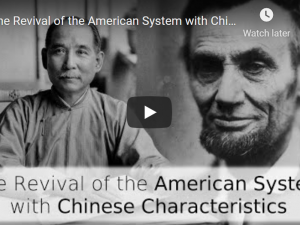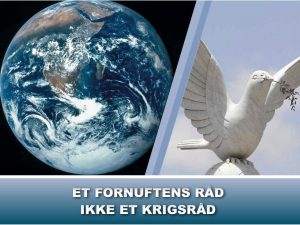in Southwest Asia (Middle East),
with English transcript
The Oasis Plan:
LaRouche’s Vision for Southwest Asia
Released February 11, 2024 by the LaRouche Organization at this permanent link.
https://www.youtube.com/watch?v=hjfFHIiXPmE&t=1s
Here is the transcript:
Cease-fire now!
The whole world is witness to the horrors being inflicted upon the Palestinian people, shared with us every day in video form. But the destruction continues, actively supported by the United States and a diminishing number of other countries. Humanity’s moral fitness to survive is being tested. The horror show must end, starting with an immediate, unconditional ceasefire.
At the time we are recording, South Africa’s action against Israel for genocide at the International Court of Justice will be heard in just a few days.
Peace is possible, but it is not the peace of a return to October 6! Before the Hamas invasion of October 7, the Palestinian people and the whole region popularly known as the Middle East were living in a terrible reality, as a cauldron of conflict deliberately maintained for geopolitical aims, an unsustainable and unjust tension.
The solution requires the recognition of a Palestinian state, in accordance with UN Security Council Resolution 242, which was unanimously adopted by the Security Council in 1967. This is the first step towards a long-term solution, such as the two-state solution supported by Schiller Institute founder Helga Zepp-LaRouche.
The solution though, is not local, is not regional; it has to be international today. China has proposed an international peace conference to develop a lasting vision for realizing Palestinian-Israeli and Arab-Israeli peace.
The mistakes that led to the lost chance of the 1993 Oslo agreement must not be repeated. Security guarantees for all parties in the region must be agreed upon. And this includes finding solutions for the potentially explosive situations elsewhere, in Lebanon, Syria, Iraq, Yemen, Libya, and Sudan, all products of decades of dangerous geopolitics.
The Oasis Plan, proposed by Lyndon LaRouche
But without economic development, without a viable and meaningful path of progress into the future, political agreements in themselves are unsustainable. The people of the region must know that their children will enjoy a better future, a better life. Peace through economic development is the only successful basis for a lasting, just peace in the region. This is what Israeli Prime Minister Yitzhak Rabin came to realize — there is no purely military basis for peace or security; development is essential.
A template for peace through economic development already exists, in the form of the LaRouche program of building a World Land-Bridge, today exemplified by China’s Belt and Road Initiative joined by more than 150 nations, including all the neighbors of Palestine and Israel. The World Land-Bridge is not only a specific plan for growth; it is a rejection of anti-growth hegemonism in the form of neo-colonialism and green Malthusianism.
A strong economic reconstruction and development plan is needed for a viable Palestinian state, in particular.
Lyndon LaRouche (1922-2019) laid it out 30 years ago. [Lyndon LaRouche was an American economist and statesman who founded the LaRouche political movement, which includes the Schiller Institute.]
It is called the Oasis Plan.
Immediately after the 1993 signing of the Oslo Accord in the White House by Israeli and Palestinian leaders, Lyndon LaRouche and his associates urged those parties and the international community to implement economic development projects to sustain, to advance the peace process. LaRouche and his associates developed the Oasis Plan, which included both certain economic aspects of Annex IV of the 1993 Oslo Accord — which was called the “Protocol on Israeli–Palestinian Cooperation Concerning Regional Development Programs” — plus it called for additional crucial water and power and other projects that LaRouche had noted were needed in the mid-1970s.
The Oasis Plan focused primarily on addressing the greatest barrier to development in the region — the shortage of fresh water — through the construction of a network of desalination plants that could turn the plentiful seawater into freshwater. And these plants would not only be on the Mediterranean coast; they would be built along two new canals: one connecting the Red Sea with the Dead Sea, and another connecting the Dead Sea to the Mediterranean. To be clear, these new canals or aqueducts are not for cargo shipping, as an alternative to the Suez Canal — their purpose is to transport water. Because of the low elevation of the Dead Sea, which is more than 400 meters below sea level, the flowing water could also provide hydropower electricity along the way, which could help to power the desalination plants and development more generally. The plants could also be powered by the large quantities of natural gas off the shores of Gaza, Israel, Lebanon, Syria and Egypt. But most importantly, the Oasis Plan calls for going beyond hydropower and chemical fuels altogether, through the construction of nuclear power complexes along these canals and on the shores of the Mediterranean and the Red Sea, to produce plentiful electricity and to desalinate seawater to green the vast deserts of the region and to power an industrialization process in Palestine, Israel, Jordan, Syria, Lebanon, and Egypt.
The use of nuclear power for energy would liberate the region’s hydrocarbon resources to be used chemically, to produce industrial materials through intermediate petrochemical products.
The nuclear powered complexes could use inherently safe pebble-bed high-temperature gas-cooled reactors, of the type just brought into operation in Shidao Bay, China.
The new man-made rivers created by desalination will tremendously expand the potential for agro-industrial development across the region, making the deserts — and the economies — bloom!
LaRouche explained the necessity of developing new sources of water in a 1994 speech. LaRouche:
“One cannot meet the indices of water consumption for a modern population, for both the Palestinian and Israeli populations, under present conditions. There is a conflict over water because the Israelis have, frankly, been using their conquests to take water from everybody. It’s one of the conflicts with Syria on the Golan Heights issue. It involves, in Lebanon, the Litani River, and things of that sort.”
The power and water development have to be accompanied by a network of transportation infrastructure upgrading the physical connectivity between all the nations of the region, turning a region of conflict, a barrier to connectivity, into a hub of interaction, into a crossroads.
A highway connecting the West Bank with the Gaza Strip, linking the Palestinian state, is an absolutely essential feature of this network.
Regional highways and rail networks will allow the entire area to operate from a higher economic platform.
LaRouche also proposed an expansion of the Suez Canal, with industrial zones on both sides, a task that has been accomplished by Egypt in recent years.
LaRouche argued since 1975 that this region, which is the crossroads of civilization and located geographically between the Indian Ocean and the Mediterranean and between Europe, Asia, and Africa, has a unique position as an industrial and logistics hub. Oil and natural gas will be feedstocks for industrial production of plastics, paints, and many other useful materials, rather than being exported as a raw material, to be used primarily for simple combustion.
The upgrading of connectivity to enable higher levels of development has been a key feature of the 2013 China-proposed Belt and Road Initiative.
Using this region as a land-bridge between continents, with the major powers like the U.S., China, Russia, and the EU contributing to its development, will stabilize the area and, along the way, help cement the better relations among the superpowers that will have been necessary to bring it into being.
Scientific, technological, and cultural cooperation and exchanges are key elements in the transformative process the Oasis Plan represents.
By cooperating to fight the desert, rather than each other, the people of the region will better be able to recognize the humanity in each other, the common capability of human beings to discover principles of nature and to transform our relationship to the environment around us. There are no human animals.
So, how will we pay for all this, and who’s paying?
Funding
Part of the funding will come from financial aid, made more possible by beating swords into plowshares, by converting the industrial and research capabilities of the military-financial complex into productive uses, as detailed in a study by EIR.
Apart from international aid, $100 billion in credit can be realized, over a decade, for the reconstruction of Palestinian areas and the full building out of the Oasis Plan infrastructure. This can be organized through development banks associated with BRICS-plus nations, including the Islamic Development Bank in Saudi Arabia; the New Development Bank headquartered in China; and other national development banks of the Southwest Asia region. The sovereign wealth funds of the major regional BRICS-plus nations can help capitalize these development banks for this purpose. The countries of the Gulf Cooperation Council have sovereign wealth funds holding some $4 trillion worth of capital. This has traditionally been placed in financial, banking or real estate assets of the bankrupt trans-Atlantic system. Now, these countries are looking for more productive investments instead, in Eurasia and Africa.
This investment can be concessionary development loans from these banks — for example of 20 years duration with interest rates of 2% and an initial grace period of 5 years if necessary.
The debt service payments on these development loans, at least if they’re made in the immediate future, would have to be made by the State of Israel, as the state currently occupying and taxing the entire area of Israel and Palestine today. The United States, and perhaps other nations, as determined at an international peace and development conference, should be the guarantor for these debt service payments.
The organization of the reconstruction work and building of the Oasis Plan infrastructures can be organized under authority of the United Nations Peacekeeping Missions Military Logistics Unit, and the United Nations Relief and Works Agency for Refugees in Palestine, and any other authorities that are required.
These arrangements should all be formally agreed upon by the nations involved in the framework of an international peace conference on Israel and Palestine, which must urgently be organized. International commitments to development, both through these particular projects and as a paradigm, must be made.
A peace vision
Achieving peace in Southwest Asia, not only between Israelis and Palestinians, but among all the countries of the entire region, will mark a new epoch in human history, as a region known for conflict transforms into one of connectivity, standing at the crossroads of three continents.
The Oasis Plan is not some distant aspiration of what can be achieved years in the future after the peace. It is only through a paradigm of international relations supporting this approach, that peace is even possible!
An end to the killing, a ceasefire is urgently needed now. But just as urgently is needed a vision for durable peace that will, at long last, shape a peaceful and prosperous destiny for the region.
Every minute the war continues brings more death, more bitterness, more difficulty in achieving shared prosperity. It must end now!
Justice for those who have died, those who have been injured, those who have suffered, demands that the awful violence awaken the conscience and intellect of the international community, not simply to say “never again” but to end, forever, the geopolitical paradigm that is the origin of most conflict in the world today. The Oasis Plan cannot today be implemented as a purely regional plan — a new security and development architecture is required globally.
The voices of the Global South are becoming stronger and more confident. Moral authority, now and in the future, depends on how we act today.
“The only human thing is to give the lives and suffering of the dead meaning, not merely by establishing peace in the Middle East, but by establishing the basis for peace which gives fulfillment to the lives of the present and future generations of the Palestinians and other Arabs, and thus purpose and fulfillment to the sacred lives of the dead.”
This applies to Israelis as well.
How about you? Will you act to give meaning to the lives of those who have perished? Will you be a voice for peace and development?
Epilogue
I’d like to thank you for watching. To learn more about the Oasis Plan and for ways to support The LaRouche Organization’s efforts to make it a reality, follow the link here and in the video description. And if you haven’t already subscribed and turned on notifications, be sure to do that to stay up to date on the progress of this vision.
Skriv under for at støtte Oase-planen: https://schillerinstitute.nationbuilder.com/support_the_larouche_oasis_plan_for_peace_and_development_in_southwest_asia







